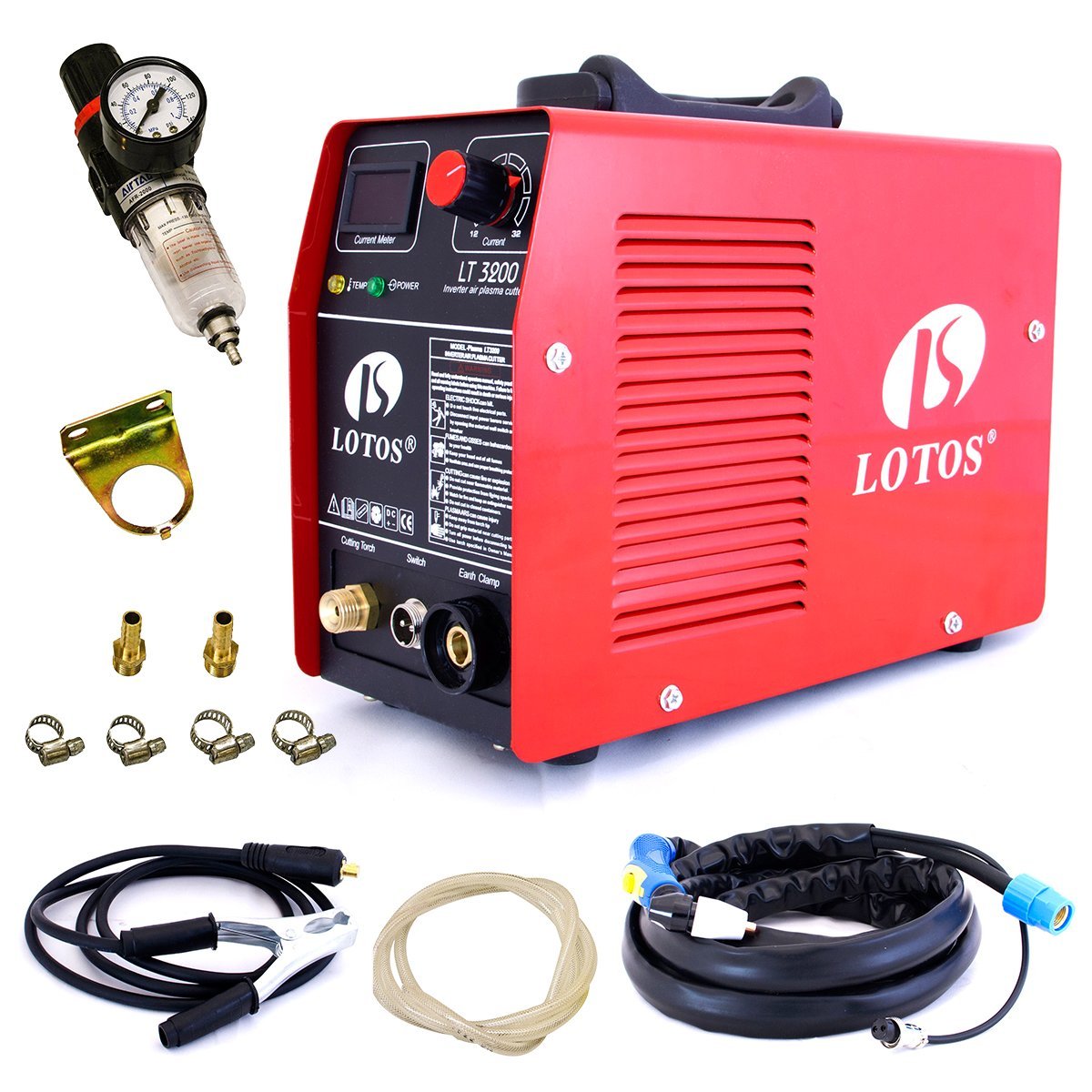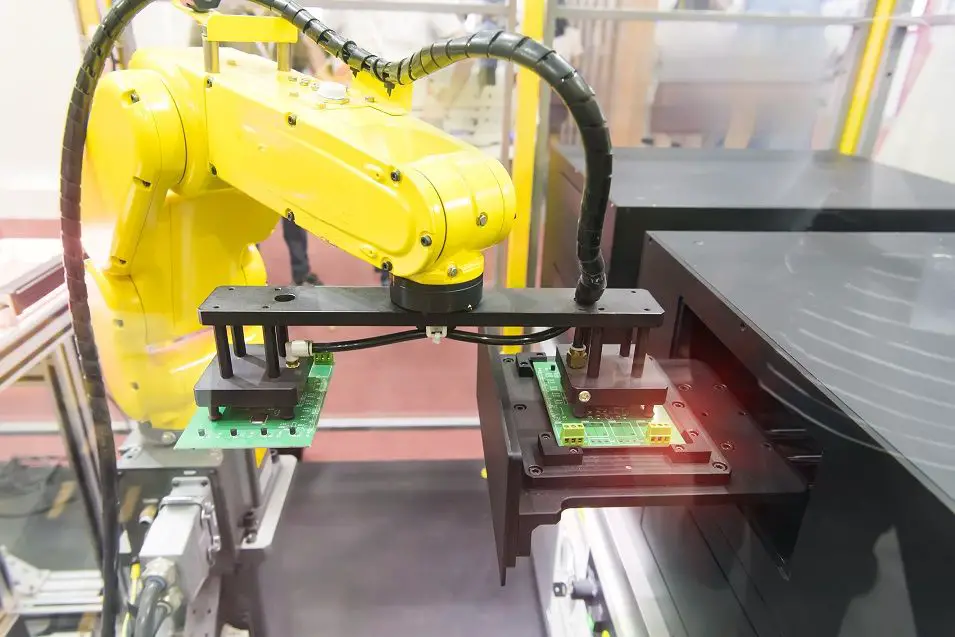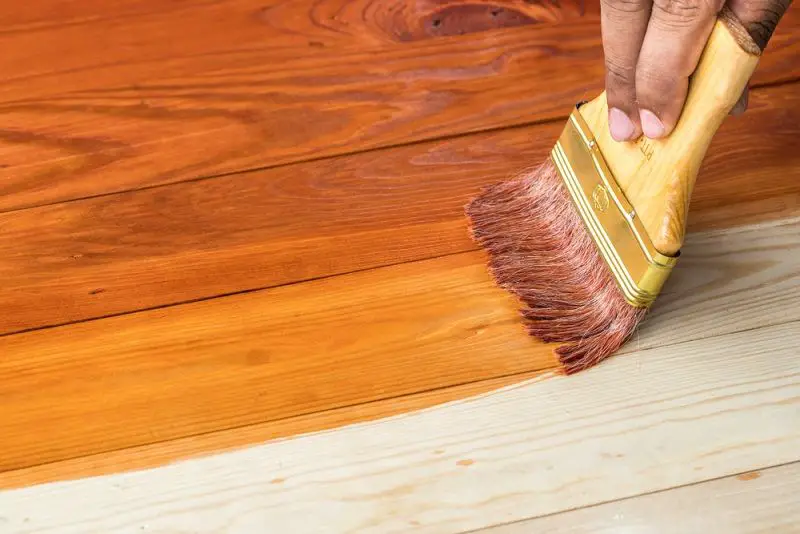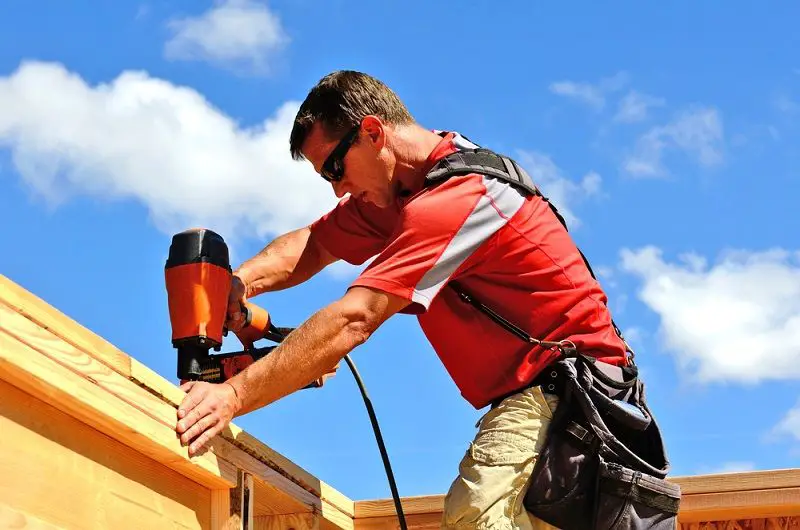A plasma cutter is an incredibly useful device that plasma in order to cut through a range of materials – including steel, aluminum and more conductive metals. This is an invaluable tool in manufacturing that offers impressive levels of accuracy and it’s also a great addition to the serious home workshop.
In this plasma cutter buyers’ guide, we’ll look into some of the best plasma cutters with built-in compressors on the market and describe how to ensure you’re getting a good instrument to add to your toolbox.
Editor’s Recommendation: Top 3 Plasma Cutter With Built in Compressor
What is a Plasma Cutter?
First, let’s look in a little more detail at precisely what a plasma cutter is and how it works. Essentially, plasma is the fourth form of matter (with solid, liquid and gas being the other three) and can be created by applying electricity to a gas. This is precisely what happens in a plasma cutter where an electric arc is applied to the gas in order to excite the gas particles and make them electrically conductive. Depending on the unit you use, your plasma cutter will use oxygen, nitrogen or even environmental air as the gas and force this inside the torch. Meanwhile, electricity is generated from an external power supply and applied to the high pressure flow of gas. This creates a ‘plasma jet’ which has an incredibly high temperature up to 40,000 degrees F! This makes short work of most materials and allows for a very clean cut.
The Best Plasma Cutter With Built-in Compressor – 5 Great Choices
1. Hobart 500564 Airforce 12i Plasma Cutter

Weight wise, the Airforce comes in slap bang in the middle at 31 pounds – which is pretty light and portable all things considered. It also has very similar requirements and performance in terms of power. It is recommended for cutting 1/8 inch steel and goes up to ¼ inch. It also has a built in inverter power supply. Finally, we have the Hobart 500564 Airforce, which is priced very similarly to the Forney and has similar specs on paper. This device is once again a plasma cutter with built in compressor and has some smart design features such as a smaller heat-affected zone to prevent warping. It also lets you use a no gas pressure mode for tuning the flame and ultimately allows you to achieve a more exact cut with a thinner kerf and less slag and mess to clean up after.
|
Pros |
Cons |
|---|---|
|
|
2. Forney 317 250 P+ Plasma Cutter, 120-Volt

Next up with have the Forney 317 Plasma Cutter. This device comes in several flavors but the one we’re looking at here is the most comparable unit at 120V. Again, it’s a portable but powerful device which is what has earned it its place in the top spot here alongside the Air Cut.
Looking at the specs, this device weighs in a little heavier at 45.6 pounds – something to consider if you intend on using it a lot by hand. The cord is also shorter at 7 foot – though this will be fine for most uses. This cutter once again runs on 15 amps and is similarly powerful. Portability is enhanced by the in built inverter power supply.
The product describes the recommended cut as 1/8th thickness though says it can ‘severe ¼’’’. One quarter is larger than three sixteenths (the maximum capability of the Air Cut), however it’s worth noting that the wording suggests that perhaps the performance suffers at these higher thicknesses. Suffice to say that the performance between these two is comparable and it’s not immediately obvious which comes out on top! What we also get here is the cut speeds which are 20 inches per minute.
There are also some additional perks to this device. ‘Drag torch’ technology for example means that the torch can be dragged directly across metal surfaces for precise cuts and it also has thermal overload protection and smart heat management.
Of course if you’re looking for a little more power then you can upgrade to the 230V option which has dual inputs and a removable torch and ground cable. This has a greater maximum thickness but of course this is reflected in both the price and the weight. There’s also a lower powered option for more portability.
What might clinch it for some readers though is that the Forney is somewhat cheaper at 120V than the Air Cut.
However, both have their pros and cons and both will make a great tool for cutting metals. Customer reviews are again largely positive but limited.
|
Pros |
Cons |
|---|---|
|
|
3. Thermal Arc 1-1110-1 Air Cut 15C Plasma System

This is a portable, light and powerful little performer. At just 29 pounds and with a convenient handle, you can easily bring this with you on a job and it won’t take up too much space in the van. What’s more is that it also offers a lot of cutting power and great cutting speed as well.
The recommended cut for this device is 3 millimeters or 1/8’’. However, the maximum capability is 5 millimeters or 3/16 inches. This runs on 120 volts with a 15 amp plug as standard. The company (Thermadyne) claims that this gives the device a 25% edge over the competition in terms of performance (these things are always rather hard to quantify but it certainly sounds good on paper).
There are a couple more thoughtful features here too, which also put the product in a good position. For starters, the cord is an impressive 20 foot long, which is very handy for a range of different applications. The trigger is easily accessible when gripping the torch and the device claims to be suitable for rust and paint as well.
With all this in mind, you have here a very capable plasma torch that should be suitable for all hobbyist uses and most commercial applications. It packs a lot of punch for its small size and is generally a well thought out product – though you do pay for it as this is the most expensive item that we’ll be looking at here.
|
Pros |
Cons |
|---|---|
|
|
4. Lotos LTP5000D 50Amp Non-Touch Pilot Arc

The Lotos LTP5000D Pilot Arc Plasma Cutter is designed to deliver top quality services that come together in a portable and compact body. It comes with a pilot arc feature that’s particularly useful when used continuously on a rough or dirty material.
Lotos’s LTP5000D is compact enough for DIY projects at home or small business projects.
This non-touch pilot arc plasma cutter offers high power output which facilitates cutting of thick materials and delivers a steady power output for thin materials. Lotos LTP5000D plasma cutter has been designed using switch power inverter technology. It helps reduce the weight and size of the transformers and overall efficiency is significantly improved.
You can cut all kinds of materials like stainless steel, brass, aluminium, copper, alloy steel and other types of conductive materials. More importantly, this can be achieved with controllable head input and without distorting or changing the shape of the metal. While it is designed for DIY users, it can accommodate the requirements of a professional as well.
Product Features
- Lotos LPT5000D is portable and uses compressed air to cut stainless steel, alloy steel, mild steel, copper, and aluminum.
- The pilot arc touch is designed to efficiently cut through all types of rough surfaces with minimal slag.
- State of the art MOSFET transistor provides a steady output for cutting thin metal and has the capacity to hit high power for optimum cutting of thick metal
- It has a dual voltage capability, which allows the machine to operate directly on 220V 50/60 Hz power and on 110V 50/60 Hz with the use of a pigtail (this is sold separately and not as part of the package)
- The Product package contains a plasma torch, air regulator, air hose and its connections and a ground clamp and cable
- This is a Digital inverter plasma cutter of 50 Amps
- It has been designed with an advanced cooling system
- It can cut up to a maximum severance thickness of 3/4- inch
- The product weighs up to 20 pounds.
|
Pros |
Cons |
|---|---|
|
|
5. LT5000D Lotos LT5000D 50A Air Inverter

The Lotos LT 5000D is quite similar to the Lotos LPT5000Dl; the only difference being that the LTP5000D uses pilot arc and the LT5000D is a contact arc cutter. The LT5000D is also portable and delivers quality cutting performance. If you are looking for a plasma cutter for both home DIY projects as well as small business projects, then the LT5000D is worth a consideration.
Its design is based on MOSFET transistors that facilitate high output of power for thick metal cutting and steady output for cutting thin metals. This plasma cutter also uses PWM (Pulse-Width-Modulation) technology, in which, the inverter power supply creates DC welding currents.
The switch power technology helps reduce the size of the transformer, which in turn improves efficiency by thirty percent.
You can achieve much cleaner cuts, with easy cleaning, less exposure to noxious gases, minimal fire hazard and much less physical labour. Compared to other alternatives like Oxyfuel, the LT5000D is much cheaper. It is a 50-amp dual voltage cutter with a movable torch trigger. You can custom fit it for thumb as well finger.
This high-Frequency Plasma cuts thicker materials as compared to standard DC plasma cutters. This plasma cutter also manages to cut more precisely with minimal distortion.
Product Features
- Lotos LT5000D is a 50 Ampere Air Plasma Cutter
- It is fully automated
- It is a dual voltage cutter (110/220V 50/60Hz)
- It is designed with Germany’s PAPST cooling system
- You can cut alloy steel, copper, stainless steel, mild steel, brass, aluminium, and other conductive materials
- The can cut up to a maximum severance thickness of 3/4-inch and a cutting thickness of 1/2-inch
- This plasma cutter weighs approximately 25 pounds.
|
Pros |
Cons |
|---|---|
|
|
6. LOTOS LT3200 220-Volt 32-Amp Non-Pilot Arc

This Plasma Cutter is designed for light duty cutting projects. The LT3200 is perhaps the most compact cutter available in the market and weighs around 17 pounds. Despite its weight it has the capacity to cut metal of 8 mm thickness and 12 mm severance thickness. It is also more affordable than the other Lotos plasma cutters. So if you are looking for a budget plasma cutter for some DIY home projects, then the LT3200 is definitely worth considering.
Product Features
- It has a capacity of 32-amps and it is a digital inverter cutter
- It is fully automated
- This plasma cutter offers dual frequency 50/60Hz at under 220V.
- It comes in the most compact size, offering complete portability.
- This plasma cutter is designed with an efficient cooling fan to prevent overheating.
- You can cut all types of steel – stainless, mild and alloy; you can also use this to cut aluminium, brass, copper and other conductive materials.
|
Pros |
Cons |
|---|---|
|
|
Things to Look for When Choosing a Plasma Cutter
When choosing your plasma cutters to use at home or in shop, there are a few important things to consider that will help you choose the best model.
For starters, you should narrow your search to the best plasma cutters with built in compressor. What this means is that the air/gas compressor will be built into the unit itself, making it a self-contained and fully functional tool rather than something that requires an additional, external gas supply. If you’re not running a manufacturing factory yourself, then this is the type of plasma cutter you should look for.
There are then a few other factors to consider and we will be rating different plasma cutters based on some of these points. They are:
Electrical outlets: Plasma cutters create temperatures that are extremely high and as you might imagine, this requires a fair amount of power to operate well. Plasma cutters with build in compressors can be designed for 110 volt outlets or 220 volt outlets and will come with their own amperage rating. Consider as well that plugging other tools into the same circuit will force them to share power.
Portability: The portability is only a factor depending on how you intend on using your device. Getting a plasma cutters with built in compressors though will make this less of an issue for starters but just make sure your cutter comes with a handle and is light enough if that’s how you intend on using it.
The most portable plasma cutters will have built-in inverters. That means that they can take DC power and then use a high frequency transistor inverter to take it from 10kHz to 200kHz. Don’t worry if that’s all jargon – just know that it allows for an even smaller housing for the plasma cutter which is ideal fi you intend on taking your device on the road with you.
Duty cycle: Finally, make sure to look into the ‘duty cycle’ and average thickness. This tells you how long the plasma cutter can be used and its maximum cutting ability and what thickness of material its capable of cutting through. As a general rule, cutters with high amperages will be able to cut through thicker materials and will also have greater duty cycles when at lower amperages.
Price: Of course all these things also affect the price. If you have plasma cutter with built in compressor and inverter and it has an impressive duty cycle, then you can bet it will cost more than something will less impressive specs. Here you need to make the choice between a device that does only what you need it to as cheaply as possible, versus a device that will last a long time and offer the best performance – possibly being the better investment if you do a lot of cutting.
With all that in mind, we’ve narrowed down the best plasma cutters that will provide a good bang (or buzz) for your buck.
Extras
Remember as well to pick up some extras along with your purchase. Good accessories and supplies include:
- Spare electrodes – These require occasional replacing
- Consumables – The housing which can eventually wear out over time due to the heats being used
- Shield cup
- Silicone grease
- Air dryer/regulator – Useful for reducing slag
These extras will help your device to last longer and will ensure that it doesn’t give out just when you need to use it!
Conclusions
To conclude, any one of these plasma cutters with built in air compressor will be more than up to the task for most uses around the home. They each run off a regular mains supply and can cut through a similar thickness of material.
The main differences lie in the performance and the design. Take a look at the Amazon reviews and images and decide for yourself. Either way, you’ll be able to start cutting straight out of the box and should have a very positive experience.






